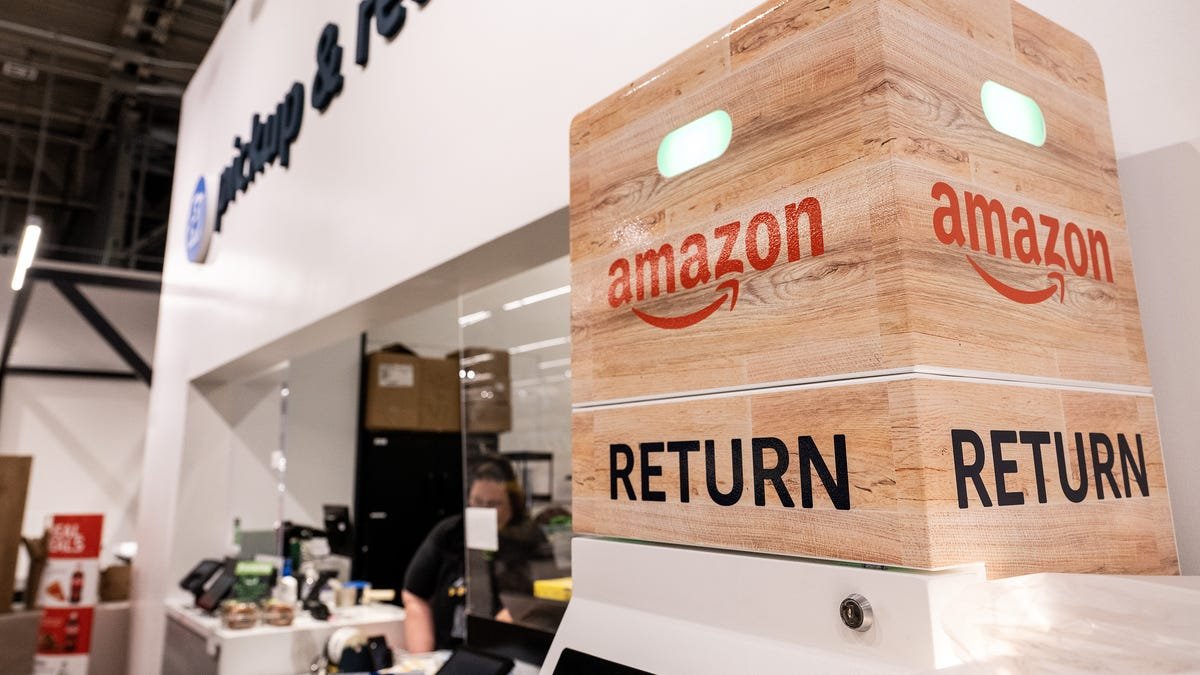How to give the best gifts all year long
It’s never too soon to start gift shopping for your loved ones! This simple tip will help you get them the perfect gift every time.
Returns of items are a fact of life for retailers but also a difficult balance to maintain as they try to keep customers happy while not losing money.
For consumers, lenient return policies play a big role in where they choose to buy. But then there is also the dark side of returns, with criminal rings set up to take advantage of those lenient return policies.
Returns cost retailers a lot of money: Total returns were expected to top $890 billion in 2024, according to a report in December 2024 by the National Retail Federation. Retailers estimated that 16.9% of their annual sales in 2024 would be returned.
But shoppers also say return policies influence where they shop: 67% of shoppers said a negative return experience would affect whether they would go back to that retailer.
Shoppers admit abusing lenient return policies
In a survey by Forter of 4,000 shoppers in the United States and the United Kingdom, 68% said they believe retailers make it easy to abuse flexible return policies. In fact, 49% admitted to abusing policies in the past year. Another 29% said they use the policies to avoid paying full price. Thirty percent said they use and return expensive wardrobe items they otherwise couldn’t afford, and that number spikes to nearly half, 46%, for younger consumers.
More than half, 58%, also said they open multiple online accounts to take advantage of promotions.
Retailers have to navigate how to please customers while not losing money on returns, said Doriel Abrahams, principal technologist for Forter, a software company that helps digital commerce brands block fraud.
“Clamping down too hard on policies to curb abuse could turn away good customers,” Abrahams said, adding that nearly 1 in 5 consumers in the survey said they’ve stopped shopping with a brand that initiated more strict return policies.
“Ultimately, blanket policies – whether that’s charging for all returns or having zero restrictions – are bad for business. The goal is to block abuse, not loyal customers.”
Return abuse is on the rise
Lauren Beitelspacher, a professor in the marketing division of Babson College in Wellesley, Massachusetts, whose research includes return policies, said she was not surprised that shoppers abuse return policies, but she was surprised that a significant number admitted to it.
The numbers are probably even higher than the 49% of people who admitted taking advantage of lenient policies in the survey, she said.
“Returns have always been a problem, but since the pandemic, it’s been really bad,” Beitelspacher said.
Return policies got very generous during the COVID-19 pandemic, when shoppers couldn’t go to stores and e-commerce began to explode, said Beitelspacher. But with e-commerce comes the lack of being able to feel an item or try it on.
“So in order for retailers to minimize the consumers’ risk, they offer that free returns and free shipping, and people just went nuts and took advantage of it,” she said.
Some retailers started quietly dialing back their return policies or charging for return shipping or restocking fees during the holiday season in 2023, but they didn’t make a big deal of it so they would not alienate their customers, Beitelspacher said.
“Returns are a big cost for online retailers, although arguably they are part of the price of doing business in the e-commerce space. The problem is that the consumer rarely covers the full cost of returns, so it harms the bottom line,” said Neil Saunders, a retail analyst at the research and analytics firm GlobalData. Tighter policies around returns, such as making the consumer pay, help offset some of the cost, but those policies also deter customers and can harm sales, so there is a balance to be struck, he said.
Are shoppers using or abusing Target loophole?
Social media is full of videos of moms who brag that they have taken a year’s worth of used kids’ clothes from the Target Cat & Jack brand back to Target for a refund or exchange for new clothes. But some shoppers say it is up to the Target store manager’s discretion.
Are the shoppers who are getting refunds or exchanges smart consumers, or are they taking advantage of a lenient Target policy?
Customers can return the Cat & Jack items or any Target-branded item for up to a year with the receipt or proof of purchase in the Target app, a Target spokesperson confirmed.
The guarantee is in place because of the confidence the retailer has in the quality of what it offers when guests shop Target’s owned brands, the spokesperson said.
Retailers say good return policies are good business
Some retailers don’t even want the returned product back.
An Amazon spokesperson said customers are allowed to receive refunds without returning some products as a convenience to customers. That is allowed on a very small number of returns and helps keep prices low for customers, the spokesperson said.
Some shoppers have shared on social media that Walmart in some cases also allows consumers to “return” an item but keep it.
The retailer would not specifically address that claim when asked and pointed to its return policy, which does not include details about keeping a returned item.
A Walmart spokesperson added that she didn’t have anything to add on its return policy, which says that for most items shoppers have 90 days to return them.
But in an online guide for its Marketplace site, which includes sales from third-party sellers, Walmart offers tips on how those resellers can implement a “keep it” rule, allowing customers to keep the returned item.
Beitelspacher, the marketing professor, said retailers will allow customers to return an item on the theory that “the delight that you might feel might make you more of a lifetime customer.” The cost of that item to gain the lifetime customer would be more than the cost of absorbing the cost for you to ship the item back, she said.
But Beitelspacher also pointed out that Amazon’s lenient return policies, while they may help shoppers feel good about Amazon, can hurt the many third-party sellers on the platform, who are actually taking the return hit.
The dark side to retail returns
There’s a big difference between a shopper who takes advantage of a retailer’s lenient return policy and criminals making a business of bilking retailers through returns – and consumers who participate.
Some shoppers purposely buy an item and “wardrobe” it, or wear it with the tags on and then return it, which is arguably gaming the system, said Eyal Elazar, head of market intelligence at Riskified, a company that helps e-commerce companies detect and prevent bad behavior.
But criminal rings also exist to defraud retailers, and some consumers are participating in that fraud, he said.
Real shoppers are using cyber criminals to handle the return process for them, but with a twist, Elazar said. The criminals scam the retailers using methods such as disappearing ink on return labels, which shows proof that a package was scanned in and on its way back to the retailer.
When that package doesn’t arrive, the criminal can put pressure on the retailer to still give the refund. The customer gets to keep the item and some of the refund while the criminal also gets a cut, he said.
The criminals love this method because they don’t have to put out any investment to buy stolen credit cards or stolen inventory and are still earning money from the fraudulent returns, Elazar said.
This new return fraud really ramped up after the pandemic, when people stopped needing to sign for deliveries and when retailers were trying to figure out ways to make consumers happy with the increase in e-commerce and returns, he said.
Betty Lin-Fisher is a consumer reporter for USA TODAY. Reach her at blinfisher@USATODAY.com or follow her on X, Facebook or Instagram @blinfisher and @blinfisher.bsky.social on Bluesky. Sign up for our free The Daily Money newsletter, which will include consumer news on Fridays, here.


